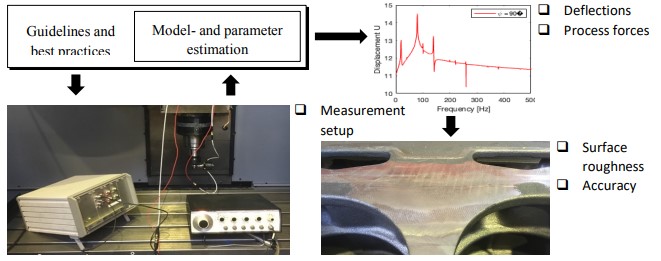Realistic verification of metal cutting processes
Structural vibrations limit the performance of machine tools. A prominent phenomenon in cutting is the so called regenerative effect, resulting from the structural feedback loop of contacting tool and workpiece. Although the study of this process-machine interaction (PMI) began almost half a century
ago, fundamental questions remain on the generation of damping in the structural loop. Researchers identified joints and the cutting process as important contributors to the process damping. But modeling is challenging, as the results indicate the non linear nature of the underlying physics.
Purpose and objective
This research aims at understanding the dynamic characteristics of the machine tool with respect to the manufacturing process. Time reduction and clear methodologies are important factors for successful industrial implementation. Therefore, focus lies on the generation of a methodological guideline for the quick derivation of dynamic machine tool properties in optimized measurements. The PMI is accounted with a co-simulation of the structure and the process.

Possible benefits
The improved understanding of the PMI helps predicting the performance of processes. Industry shows a strong interest in applied science driven guidelines and methodologies to optimize their processes and strategies. The approach is a valuable contribution to the thrive for reduced tool wear, increased surface quality and overall reduced impact of vibrations on the workpiece.
Consortium


